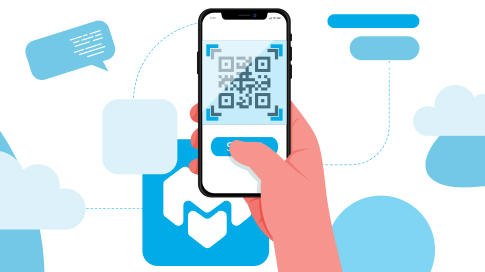6 Effective Strategies for Recruiting Participants for UX Research
The key to building a world-class product is foolproof UX research. To ensure their product or website serves the needs of their users, UX designers recruit participants closely resembling their target customers to understand their buying psychology and behavior. However, 43% of UX designers struggle with finding the right participants for their UX research process. By leveraging the best user research tools, designers can locate suitable candidates and comprehensively test various aspects of their products, enhancing the effectiveness of their UX research methods and overall process. If you know where to look, you can very well find suitable candidates for your research and test multiple aspects of your product. This article outlines six effective strategies to pool participants representing your present and potential customers and conduct solid UX research.
1. Create a Solid Recruitment Plan
Firstly, you need to know what your ideal participants look like, and for that, you need to understand your user persona really well.
- Define the problem before starting on a solution—what specific features are you going to test, and what kind of participants you’d need for that?
- Set goals for your UX research process—what do you want to achieve by a specific period?
- Determine if you need a specialized UX research tool for your research.
- Identify how many research participants you’d need to conduct your UX research.
- Create a system to track progress or keep in touch with the participants—a project management tool like Trello or Asana will do the job.
- Create a database of high-quality participants that you can use for your future research plans, too.
2. Invest in Paid Recruitment Software
Suppose you need to reach many people or don’t have the time or resources to recruit participants. In that case, you can invest in a participant recruitment software that helps you instantly source participants for your research.
Go for paid recruitment software if you want to:
- reach a specific demographic (e.g., millennials working in IT);
- outreach hard-to-access people;
- employ reporting tools to measure the impact of your research;
- employ multi-method testing, such as video-based interviewing.
3. Use Multiple Channels to Source Participants
Use the following channels to source top-quality participants:
University Channels
If your company is based in a city with an academic institution you’d like to target for participation, send out an email asking if they would be willing to host an event or two.
Advertise on Social Media
LinkedIn Ads: LinkedIn has an excellent platform for recruiting participants, but it’s not free. You need to pay for running ads and get your ads approved before successfully running them. In fact, this is the best way to reach people already in your target market, and you’ll be surprised to see the number of leads you can acquire through LinkedIn ads.
It’s worth the investment as you get immediate feedback (you can see how many people clicked through). Moreover, there’s a good chance they’ll click through again if you send them more information or an invitation link after they’ve seen one ad.
Facebook Ads: Advertise your requirement on Facebook Ads or share articles relevant to UX research topics like mobile app design, user experience design principles, etc. This helps build awareness around these topics among potential candidates’ networks.
Google Ads: Optimize your ads for SEO. You must ensure that the keywords you are targeting in your ad and landing page are relevant to the people visiting it. If you want a video-driven audience, then “video” should be one of those words or phrases on both sides of your ad copy.
Advertise on Craigslist
Let’s say you want more organic leads without spending money on advertising campaigns. In that case, Craigslist is your best option, as it allows users within their network who share similar interests (such as UX research) to contact each other directly.
The best part — you can do so without ever leaving your homes or offices. Just look up on Craigslist, and you’re sorted.
Include the following information in your Craigslist ad:
- The date(s) of your UX research event(s)
- The location(s)
- Who will be attending (name(s), role(s) and contact information)
- Why is this particular event relevant?
- How much time will participants have during/after their session with you?
- What topics/questions would be most beneficial for them going forward into their careers as UX researchers/designers, etc.)?
4. Create a Landing Page for Your UX Research

Creating a landing page is crucial for two reasons:
- To make sure that you’re reaching the right people.
- It helps convince participants that they are helping themselves and their company by participating in your UX research project.
Include information about the project, its goals, and benefits, along with an invitation to participate. The more they know about what they’re signing up for and what they’ll gain from participating in the study, the more likely they will be willing to participate.
Make your research process as simple as possible, and you must have a clear signup form and referral system in place. People should be able to quickly sign up for their study without having to think about it too much. You should also consider creating a mobile app so participants can complete their survey from anywhere at any time. Finally, keep it short and sweet—a five-minute survey is better than a 200-page questionnaire. If possible, include a contact form so people can submit questions or concerns immediately—this will help ensure that any issues are addressed quickly before they become major headaches later on during the research process.
Outline the Benefits of Participating in Your UX Research Study
When you reach out to participants, you should also outline the benefits of participating in your research study. For example:
- The research will benefit them by providing information about the product or service and how it can be improved.
- The study’s results may help other participants make informed decisions about purchasing products from your company or using your services in the future.
Talk about incentives on your landing page to make your offer more enticing. Incentives are a great way to get people to participate in your research. It’s also one of the most effective ways to recruit participants because it doesn’t require any specific knowledge about UX or design—you need an exciting incentive for them to want in on it. You can offer anything from a gift card or meal at a restaurant (which is especially useful if you’re conducting user research with remote users).
5. Run a Survey
A survey is a great way to find participants for your research. Use it in combination with other strategies and tactics, such as cold calling or emailing. A survey can be used for several different purposes.
Qualifying Participants
This is to get a good idea of who will be interested in participating in your UX research project. You’ll want to ensure that the people who respond aren’t just too busy or not interested by asking them questions before getting started with the recruitment phase of your project.
Gathering More Information about Each Participant
Once you’ve received responses from potential participants, run another set of questions about themselves (e.g., age range) so that you have even more information about their situation before making any decisions about whether or not they’re suitable for this particular study.
6. Use Your Existing Network
One of the best ways to recruit participants for UX research is to utilize your existing contacts. For example, suppose you are a game designer and have previously worked on projects with a company or individual. In that case, you can use their contact information to find more people to participate in your research project.
Ensure you have permission from each person who wants to be part of your study before sharing their information. It’s also important they know who else will be using their data. This way, there won’t be any misunderstanding about what has been collected and where it’s going.
You should also keep track of who has been contacted so far (and how many responses have been received). This way, when you later need to reaccess the information, it’ll all be accessed quickly without any problems. Moreover, keeping an eye out for potential UX research bias is essential—it’ll only hurt your results.
Closing Thoughts for Recruiting UX Research Participants
Recruiting participants is a critical part of UX research involving human participants. UX recruiters should invest the time and effort necessary to do it well and conduct quality research. However, it can be a costly and time-intensive endeavor, especially when not looked through the proper channels. The key is setting clear goals with your recruitment plan and ensuring you stay on track using multiple methods. Pick the strategies that work best for your situation and follow them diligently (and with enthusiasm) for the best results.




Leave a Reply